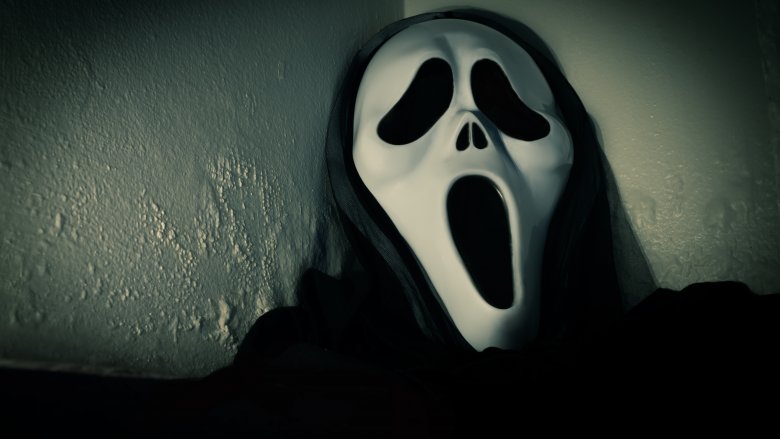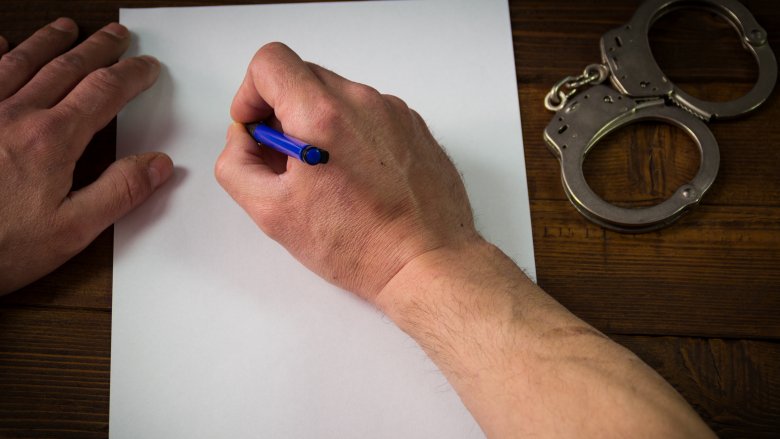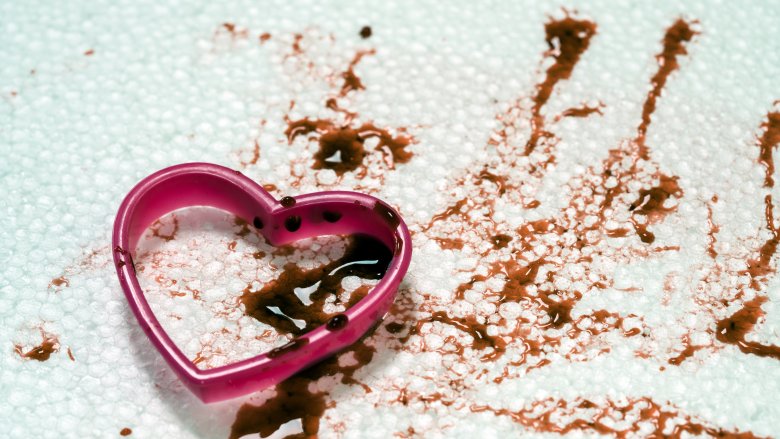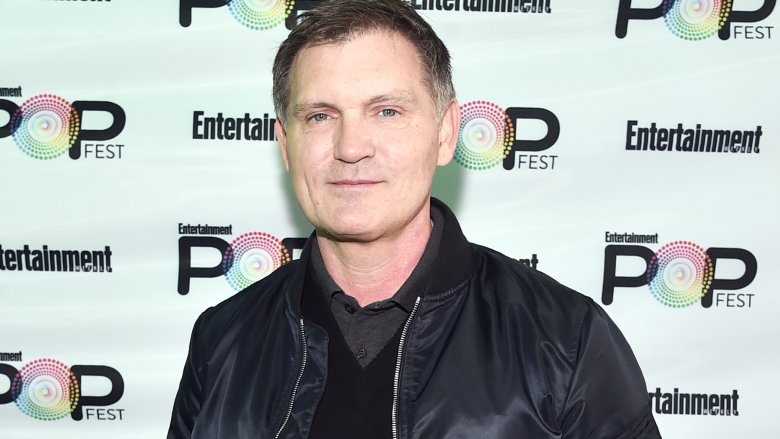The Bizarre True Story Scream Is Based On
We may receive a commission on purchases made from links.
In 1996, Scream was terrifying millions and changing what a genre horror movie could be. We all know the movie's twists and turns by now, but many people have forgotten that the story was inspired by the events of a true story. In 1990, a serial killer stalked and murdered students in Gainesville, Florida...and he terrified the entire state. If you don't know it, here is that story.
The victims
People remember a killer's name, but it's not as common they remember the victims—so it's only right we start with them.
According to ThoughtCo., it started on August 24, 1990, when 18-year-old Sonja Larson and 17-year-old Christina Powell were attacked in their own apartment. Larson died first, bound and stabbed. The killer headed back downstairs, tied Powell up, raped her, then stabbed her in the back multiple times. The bodies were mutilated and posed.
The spree continued the next night, with the murder of Christa Hoyt. She, too, was attacked, bound, raped, and stabbed in the back. Her body was also mutilated and posed—law enforcement found her head sitting on a bookshelf.
On August 27, an apartment maintenance man was asked to check on a pair of roommates: Manny Taboada and Tracy Paules. He walked into the apartment, then turned around, locked up, and called police. Taboada was dead, and Paules—like previous victims—had been bound, raped, and stabbed. The maintenance worker had seen her body when he opened the door, and later said she was laying next to a black bag. By the time police got there, the bag was gone. The media dubbed the killer The Gainesville Ripper.
The first suspect: Edward Lee Humphrey
It wasn't long before authorities had their first suspect, and if you're familiar with the horror genre, it plays out here. Edward Lee Humphrey was arrested on August 30, on completely unrelated charges of assaulting his 79-year-old grandmother. Police quickly homed in on him for the murders, amid claims he had stopped taking the medication he used to treat his bipolar disorder, that he'd started carrying a knife with him, and that acquaintances claimed he had been disappearing on secret "missions."
Months passed, and Humphrey was never charged. According to the interview he gave with the Orlando Sentinel three years after the murders, prosecutors kept bringing up his name in spite of a complete lack of actual evidence.
Humphrey's background reads like you'd expect: alcoholic parents, an overwhelming pressure to succeed, violence, and rebellion. On the same days as the murders, Humphrey was reportedly acting bizarrely, making serious threats, and brandishing knives he'd hidden under his clothes. Another college student—Sydney McGrat —even told police they'd talked about what it would be like to dissect humans. And, of course, the killings stopped with Humphrey under arrest. He was deemed too mentally unstable to be put on trial, was confined to an institution, and in January 1991, police realized there was another suspect.
Another suspect surfaces: Danny Rolling
If anything, the story of Danny Rolling's downward spiral is even more bizarre than the accusations leveled against Humphrey. After his arrest, The Independent Florida Alligator assembled a profile on him that included an abusive childhood ruled by a father who not only beat his family, but who would beat them for not breathing correctly. Rolling had turned to self-medicating with alcohol by the time he was 11, he left the Air Force after being diagnosed with a personality disorder, and after a failed marriage he turned to drifting and robbing supermarkets for cash.
His terrifying spiral started in earnest in May of 1990, when he shot his father twice. The elder Rolling lost an eye and an ear, but survived. Rolling fled Louisiana, and was arrested on September 7 for robbing a Winn-Dixie in Ocala, Florida. He'd been on police radar even before that, when they'd chased him to his forest campsite and found bloody clothing, dye-stained cash, and a tape, where he rambled on about some pretty dark stuff. The site was found the day after the last murder.
According to Complex, Rolling's father—who, remember, he'd just shot in the head—went on record as saying he didn't believe his son was capable of the murders he was now being accused of. He had a stake in things, though, and that was his reputation. The elder Rolling was a retired police lieutenant.
Rolling's confessions
A month before Rolling was due to go on trial, he buddied up with another inmate named Bobby Lewis. Rolling spilled all the details of the Gainesville murders to Lewis, and when it came time to talk to investigators, he would only do so through his new friend. Police asked a question, Rolling whispered the answer to Lewis, and Lewis relayed it to authorities.
According to ThoughtCo., this was the way Rolling not only confessed to the murders, but claimed he hadn't finished his mission. He had wanted to kill a total of eight people, one for each year of jail time he'd already served.
That wasn't the only confession he would make, either. In 2006, Rolling was sitting in jail with his execution date looming. Fox News reports that it was during a two-hour conversation with the Rev. Mike Hudspeth that Rolling wrote up his confession to three other murders that had taken place in Louisiana on November 4, 1989. Rolling confessed to stabbing and killing 55-year-old William "Tom" Grissom, Grissom's 24-year-old daughter Julie, and his young grandson Sean. They were at home making dinner when they were attacked.
The Rolling campsite tape
According to Complex, police knew from the moment they set their sights on Rolling he was guilty of something, but it wasn't until January 1991 that they started to suspect he was their murderer. He was tried for robbery in 1991, but wouldn't go on trial for the murders until 1994. When he did, jurors heard the tape police had discovered at his campsite. In the context of what he was on trial for, it was eerie stuff.
After going on a bit and lecturing his brother on the best way to hunt, shoot, and kill an injured deer (through the lungs, the killing blows he'd used on his human victims), he sent a message to his father, as transcribed by The Independent Florida Alligator. "Well, Dad, I hope you're doing better. [...] I wanted to make you proud of me, I let you down, I'm sorry for that. Well, I'm gonna sign off for a little bit, I got something I gotta do. I love ya. Bye."
According to the Orlando Sentinel, there were other tapes played at the trial, too, including one where Rolling claimed to have other personalities named Ynnad and Gemini, and one 58-minute long tape where he sang songs he'd written. They included lines like, "little girls are not all sugar and spice", and "you're a killer, a drifter gone insane." Rolling had pleaded guilty—against the advice of his lawyer—and was ultimately sentenced to death on each count of murder.
Rolling gives his thoughts on why serial killers are "natural"
Humans are fascinated by the darkness, and serial killers are extraordinarily dark. In 1998, reporter Lonnie Robinson from The Hillsdale Daily News was given permission to talk to Rolling while he sat on death row, and while he refused to comment directly on his own actions, he did share some of his opinions on the role serial killers play in society.
He started by saying society was filled with hypocrisy, giving medals to soldiers who killed while condemning the serial killer who took matters into his own hands to kill those who also needed to die. He likened big game hunters to serial killers, too, and condemned people who ate pork because of how much pigs have in common with people.
He also suggested society should start a "hunting season" where serial killers were allowed to hunt their prey with no fear of repercussions. The only time a serial killer should be punished, he said, would be when they hunted out of season. That's because, Rolling said, serial killers could provide a valuable service, thinning the herd, and removing people who were "inferior, diseased, or simply needed killing,"...the same reasons given for having a hunting season for deer. It was only natural, he claimed, and would satisfy humans' natural instincts to harm other humans.
Rolling's bizarre engagement to crime writer Sondra London
Rolling's trial was just getting ready to start when The Washington Post reported on one new development that had happened while he was in jail—he got engaged. Sondra London was a freelance journalist whose work tended to focus on serial killers, which either makes the whole thing more bizarre or more understandable...we're not entirely sure which. London—who already had a daughter from a previous relationship—described her first impression of Rolling with, "[...] standing before my hungry eyes was one gorgeous hunk of a man." She'd call him her "dangerous pussycat," boast about his artwork (filled with scantily-clad, terrified women, and skulls), and reveled in his flattery.
She explained their relationship by saying, "With a prison relationship, it's more a relationship with an abstract vision of the person. We don't really know anyone, and when we love someone we love our image of them."
London's motives have been debated, though. She admitted freely she knew he wasn't going to be beating the murder charges, and she also used her close connection with him to write a book: The Making of a Serial Killer.
Rolling sang during his execution
Rolling was the 47th murderer executed in the US in 2006, and he died October 25 at 6:13 pm, after a last meal of lobster tail, shrimp, a baked potato, sweet tea, and strawberry cheesecake. According to accounts compiled by the Office of the Clark County Prosecuting Attorney, Rolling sang a hymn he had composed himself as he was administered the lethal injection, and they also note he never asked for forgiveness, or expressed any regret for what he'd done.
There were the usual protesters outside, but the witnesses—including Christa Hoyt's stepmother, Dianna—made it clear that they considered it a more peaceful death than he deserved. Tonya Wilson, a former roommate of Christina Powell and Sonja Larson, said, "I'm an eye-for-an-eye kind of person. I think he's getting off so easy it's sickening."
The story gave Scream's writer honest-to-gosh nightmares
In 1997, Kevin Williamson was riding high on the success of Scream. He was interviewed by CNN and he talked a little bit about how the story of the Gainesville Ripper had affected him, and how it shaped the story.
It started when he was house-sitting, and turned on the television to watch a Barbara Walters special about the Gainesville killings. "And I was getting so spooked," he recalled. "I was being scared out of my mind. During the commercial break, I heard a noise. And I had to go search the house."
He ended up finding an open window, which prompted him to get a butcher knife from the kitchen and call a friend. That, of course, went about as well as it would if you confessed to one of your friends, and his buddy started talking about some of the classic tropes in the horror movies they'd grown up watching. "I went to bed that night so spooked I was having nightmares and I woke up at like three or four in the morning, and I started writing the opening scene to Scream."
Gainesville still remembers
More people might know Scream than know the real Gainesville murders today, but Gainesville itself hasn't forgotten. A mural is still painted on a wall on Southwest 34th Street, now maintained by the University of Florida Interfraternity Council. There's a bronze plaque there, too, listing the names of the victims.
To mark the 25th anniversary of the murders in 2015, the city held a memorial service for the slain students. The families of those students sat with the law enforcement officers who put an end to Rolling's murder spree, three deaths before he hacked and stabbed his way through the eight he planned to kill.
Christi Powell's mother spoke, saying, "The festering has disappeared, but there is a little scar. But that scar does not interfere with carrying on with our lives. Our family will never forget, but we are healed and everyone is living a good, normal life. All is well."









